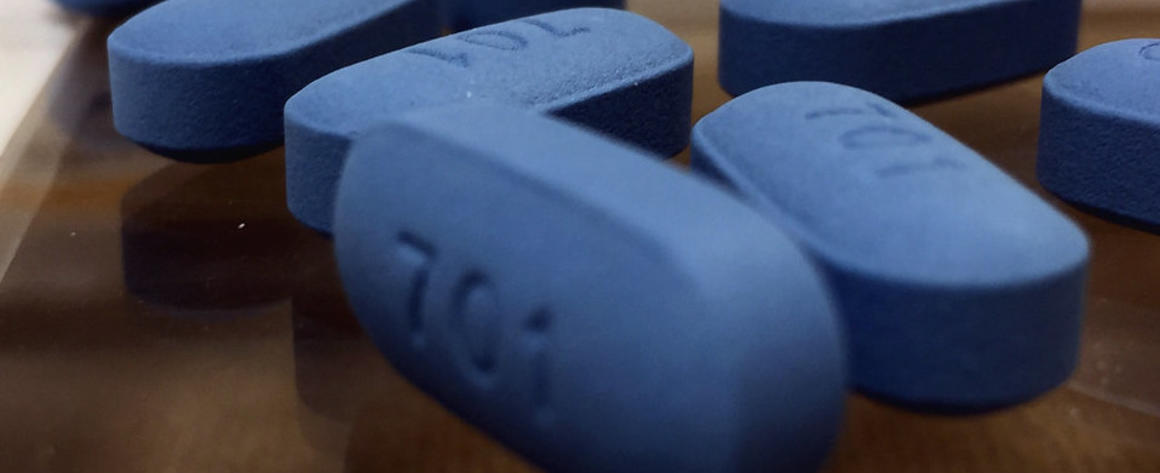When my uncle died of AIDS in 1984, at just 42 years old and in the prime of his life, the idea that the epidemic could be ended through prophylaxis was only a dream. Back then, patients just hoped to make it to their next birthday, to not lose any friends that week, or that more would not die undiagnosed, as my uncle did.
Today, not only is HIV infection manageable but we can actually arrest its spread—if only more people could afford to take the highly effective prophylactic treatment known in the U.S. as Truvada. Despite the recent announcements by Gilead Sciences (which markets Truvada) that it will donate enough of the drug to treat 200,000 people a year for the next decade and allow generic competition earlier than expected, the case of Truvada underscores why we need a public option in pharmaceuticals to ensure broad, long-term access to essential medicines.
The combination of drugs in Truvada reduces the risk of HIV transmission by 92 percent. Yet only 10 percent of at-risk individuals in the U.S. are currently using this treatment, in large part because it costs $1,600 to $2,000 for a month’s supply. Gilead’s donated treatments will only reach about one-quarter of the current at-risk U.S. population not already on the drug—not to mention all those who will be newly infected as access continues to be limited.
Moreover, after another 15 months of market exclusivity for Gilead, only one generic competitor is poised to enter the market. As FDA analysis has shown, when only one generic is on the market, its price is usually just below that of the brand-name competitor; prices don’t drop significantly until several generics are available. Though nothing will prevent other generics manufacturers from entering the market once Gilead’s exclusivities expire, nothing compels them to enter the market, either. As in the cases of antibiotics and neglected tropical diseases, there is little incentive for private pharmaceutical firms to create the low-cost generics that could ensure broad-based access to prophylactic HIV treatment because there is little profit to made from the most at-risk populations who happen to be the least able to pay.
This is why it is so important to have a public pharmaceutical option. Without a profit motive, public drug manufacturers would be best placed to produce low-cost medications for a whole host of ailments and would have no incentive to engage in “pay-for-delay” deals that so often stifle competition. Public production could ensure an adequate supply of essential medications available to the public at or even below cost. We saw this in Brazil when it was able to use the production capacity of its public labs to distribute antiretrovirals for free in a successful program to stem the spread of AIDS there.
Last year, Sen. Elizabeth Warren (D-Mass.) and Rep. Jan Schakowsky (D-Ill.) proposed the creation of an Office of Drug Manufacturing that would enable just that. Similar state or municipally owned companies could be created as well.
So many of the gains in the development of and access to HIV and AIDS treatments in the decades since the crisis began are due to public outcry and public investment. Truvada is no exception; though marketed by Gilead, it was developed largely through public funding.
Furthermore, as The Washington Post reported in March, the case of Truvada presents a unique twist because the public (as represented by the U.S. government) already owns the patents on Truvada’s component drugs. This means that we should not have had to wait for Gilead to decide (under mounting public pressure) to grant other manufacturers entry into the market. The U.S. government could simply license its patents to more manufacturers to produce generic versions of the drug. If we had publicly owned manufacturers, they would be the natural choice to be licensees for producing cost-effective generics.
Public production of prophylactic treatments like Truvada would undoubtedly be a net economic gain for our country as well. Treating patients once they have contracted a chronic illness such as HIV is expensive, and chronic illnesses contribute to reduced labor market participation and productivity as well as increased disability claims and early deaths.
Since the public already makes the majority of the investment in pharmaceutical research and development, why should the public not reap more of the benefits, including economic ones, of these scientific advancements? Companies like Gilead benefit from millions in public subsidies and loans and some pharmaceutical companies pay no federal taxes at all. Meanwhile, millions of taxpaying Americans have trouble affording medications like Truvada because the right to make almost limitless profits has been deemed more important than the right to life.
But another pharmaceutical industry is possible, in which profit is subordinate to public health needs.




